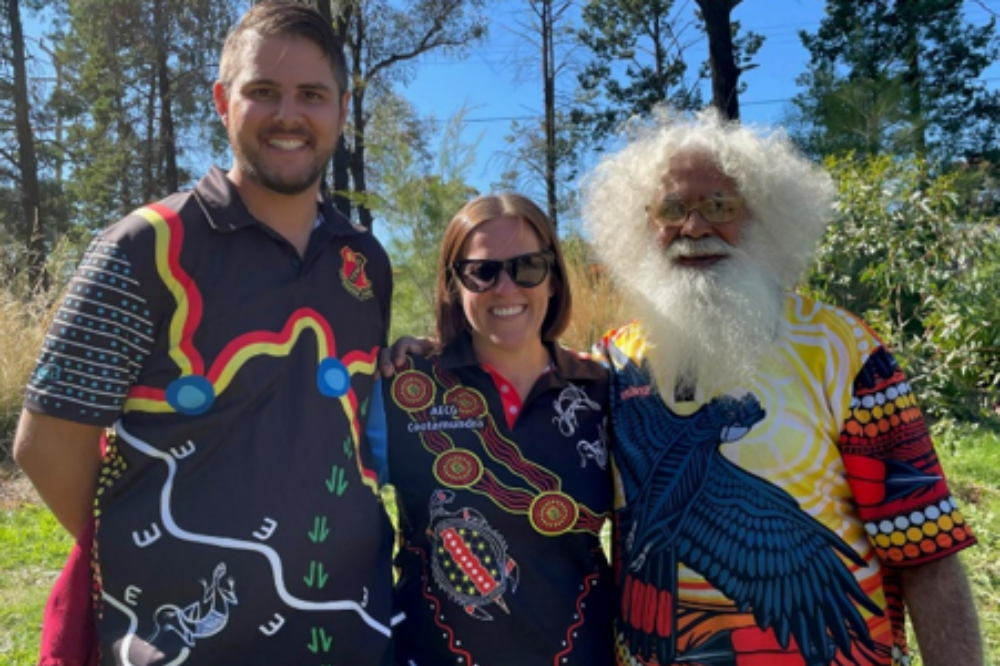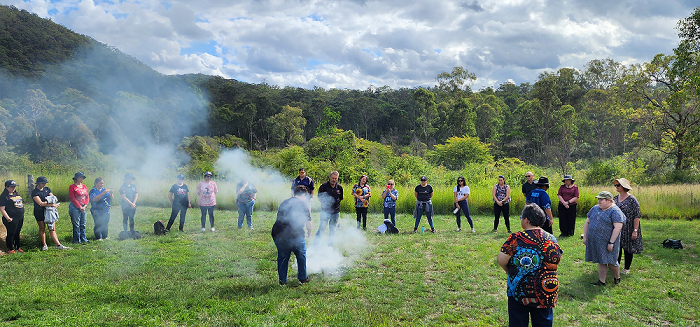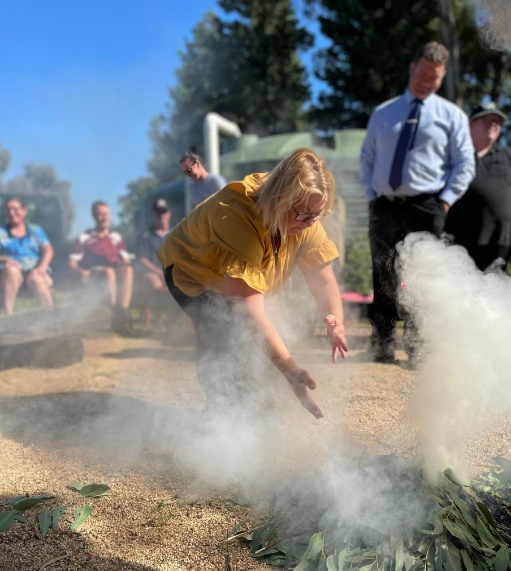
Each year, from the first Sunday in July until the following Sunday, Australia celebrates the history, culture and achievements of Aboriginal and Torres Strait Islander peoples with NAIDOC week – an occasion that is gaining more awareness among young people as schools strive to address the glaring gap in education and employment outcomes between Indigenous and non-Indigenous Australians.
Indeed, this is a key goal of the Federal Government’s Closing the Gap framework, which aims to achieve equality for Indigenous Australians in health, education and employment by 2031.
While there has been limited progress in achieving these goals, schools are ramping up efforts to ensure Indigenous children get the best start in life through an inclusive, engaging and empowering education.
Keen to build on the powerful work already underway, an iniative by the NSW Department of Education saw staff from more than 2,200 schools across the state undertake cultural awareness training at the start of Term 1, with some organising this professional learning to be held On Country with an Elder or Elders.
Students lead cultural visibility
Bidwill Public School is one school that has embedded On Country learning into its curriculum, enriching the learning experience for students and staff.
“On Country and other professional learning has improved staff's understanding of the experiences and histories of Aboriginal people and of the importance of embedding Aboriginal voice in planning,” executive principal Michelle Drage told The Educator.
“Several student groups have been developed to help ensure student voice leads cultural visibility across the school. Students have helped plan and design communication tools to update parents and carers on personalised learning goals. Students have helped design a mural for the school.”

Drage said engaging more closely with communities has influenced the school’s approach to Indigenous education in a powerful way, adding the feedback from this approach has been resoundingly positive.
“Feedback shows the community feels valued when they are involved. Families want to be involved in programs related to Aboriginal education, and to know and understand what their children are learning at school,” she said.
“We have also had requests from Aboriginal parents, both from this country and from other Aboriginal language groups, to learn more about the local Darug people, so they can enhance their understanding of the land on which they live.”
Forging genuine partnerships
At Canley Vale Public School, improving Aboriginal education opportunities is part of a successful Strategic Improvement Plan (SIP) that is helping to embed ongoing professional learning for staff, and personalised learning for students.
“The staff development day afforded time to reflect and discuss current practice with Personalised Learning Pathways [PLPs],” relieving principal, Gavin Towers told The Educator. “After trialling sample templates, members of the Aboriginal Education Team selected one that best meets the needs of Canley Vale Public School students.”
Towers said the staff now have “a deeper understanding of forging genuine partnerships with students, families, and teachers to develop and lead rich and purposeful PLP processes” – an understanding he believes will ultimately result in stronger educational outcomes for Aboriginal and/or Torres Strait Islander students at the school.
“Staff have increased understanding that PLPs can be used as a teaching and learning tool to engage Aboriginal and/or Torres Strait Islander students, families and community members, whilst building and maintaining positive relationships and authentic partnerships.”
Moving forward, Towers said ongoing professional learning will also boost Aboriginal students in attendance, engagement and learning.
“It also strengthens the knowledge and understandings of Aboriginal histories and cultures for both Aboriginal and non-Aboriginal students. This will be evaluated from a range of student data sets and each student’s Personalised Learning Pathway data,” he said.
“For non-Aboriginal students, information will be analysed from staff, student and parent/carer survey data and focus groups, as well as student assessment data. This will provide evidence of the effectiveness and impact of the strategies implemented. This will be evaluated within the school’s SIP to support ongoing improvements in Aboriginal education.”
Taking the first steps in reconciliation
At his staff development day, Bateau Public School principal Peter Graham discussed the need for a greater understanding of Aboriginal Education Policy and the importance of building confidence among staff to have open and constructive conversations.
However, it wasn’t just his staff setting out on this empowering journey. Graham’s school was hosting five others from the Tuggerah Lakes network – Berkeley Vale Public School, Chittaway Bay Public School, Erina Heights Public School, Killarney Vale Public School, and Wamberal Public School.
On the day, teams from the six schools worked with and evaluated personalised learning, opportunities to engage in curriculum understanding, and “took the first steps in reconciliation”.
“Staff in a mix of teams heard a consistent message about the importance of working with community to meet cultural and academic needs, in a balanced approach for our Aboriginal and/or Torres Strait Islander students,” Graham told The Educator.
“In-depth sessions were delivered by Karen Jones, Executive Director, Aboriginal Outcomes and Partnerships, Kuriwa Local AECG, Tuggerah Office Aboriginal Education Team and expert staff representing the six schools.”
Graham said schools in the Tuggerah Lakes network made an ongoing commitment to Aboriginal Education to support almost 300 staff in engaging in professional learning for cultural and academic improvement.
“An analysis was made of what staff felt would boost their confidence to embed Aboriginal Perspectives within every classroom. By hosting a series of hub meetings, staff can engage with content relevant to their school and local context,” he said. “School visits will help staff to continuously evaluate and improve.”
Graham said the Bateau Bay Public School Assistant Principal of Aboriginal Education hosted the first hub meeting, focusing on rich texts and easy ways to embed perspectives in literacy and numeracy lessons, using syllabus texts and universal resources.
“Staff highly valued learning the small steps they can take in their daily practice which will have a significant impact for all students.”
A sombre but powerful history lesson
Temora High School staff visited the ‘Cootamundra Aboriginal Girls' Training Home’, which was established in 1912 as a training institution for Aboriginal girls who had been removed from their families under the Aborigines Protection Act 1909-1969.
When removed, Aboriginal girls were trained to become domestic servants and farm hands in wealthy non-Aboriginal households. Girls in the homes were referred to as ‘inmates’ and parents were unable to regain access to their children until they turned 18 years, and in many cases never again.

The school’s principal, Ian Pattingale said while the visit was “eye opening and sombre” for staff, it also highlighted the incredible resilience of First Nations people and culture.
“Some who have lived or worked in Temora for most of their life were shocked to learn of the home's existence and tragic history, highlighting how much more learning and truth telling we all need to commit to,” Pattingale told The Educator.
“For some staff, the events of the Stolen Generations felt like history, well in the past. The realisation they occurred within their lifetime was a powerful moment of reflection and sorrow.”
Pattingale said the experience also prompted many staff to undertake their own research on the history of the home and the Stolen Generations.
“Staff better understand ongoing intergenerational trauma and how this presents in students, parents and families. It highlighted the incredible resilience of First Nations people and culture.”

The school’s deputy principal, Lisa Muller said several weeks after visiting the Cootamundra Aboriginal Girls' Training Home, staff gathered to reflect on how they could embed what they learnt in the classroom and enhance high expectations relationships at the school.
“We identified opportunities to embed the Aboriginal Education Policy in teaching and learning programs and developed faculty plans for a NAIDOC Week activity. Faculties also developed a commitment to Aboriginal Education and agreed to revisit this at every faculty meeting,” Muller told The Educator.
“We held a whole-school Sorry Day Assembly, featuring a panel of First Nations and non-First Nations guests, who spoke about their experiences with the Stolen Generations.”
Muller said The school has “a strong and deadly” Aboriginal Education Team with staff and students, that regularly advises and consults with the community.
“The school has strong ties to the Cootamundra AECG and engages Aunty Elaine Lomas for weekly language and culture lessons with students. These actions ensure significant impact and long-lasting cultural change in our school and community.”


